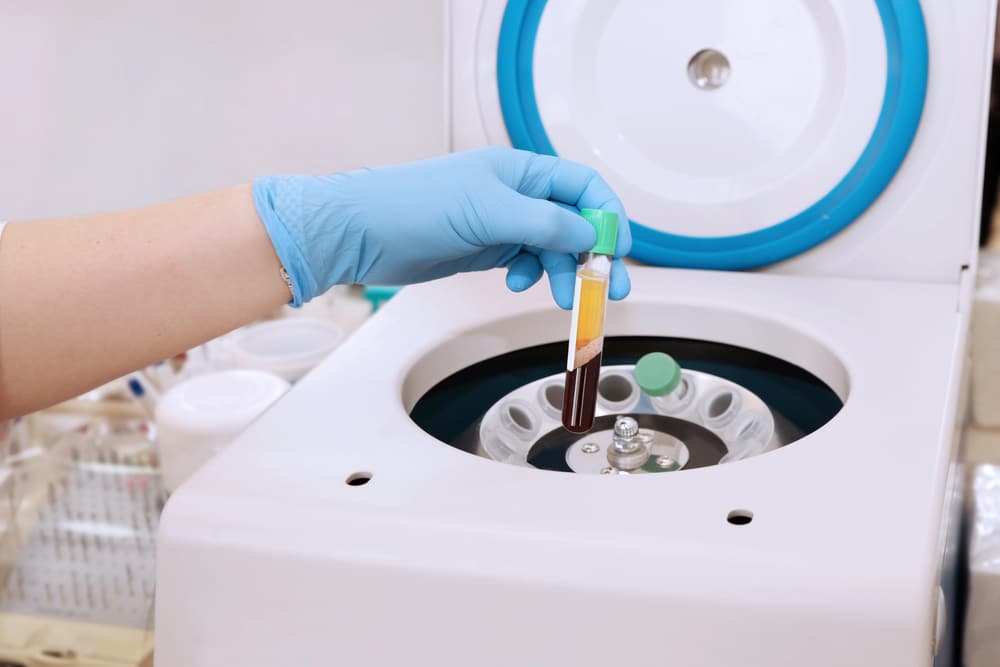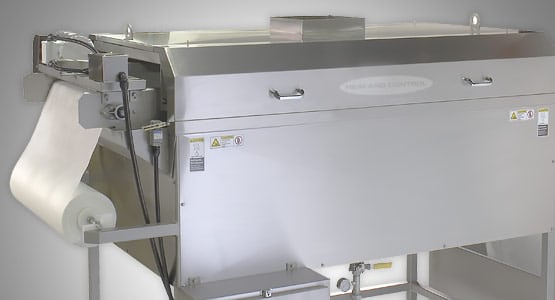Curious about how nonwoven fabrics are used in the automotive industry?
According to Non-Wovens Industry:
Opportunities for nonwovens in the automotive market continue to expand. As auto designers look for materials that are lightweight, cost-effective, sustainable and offer increased comfort and reduced noise to drivers and passengers, nonwovens are helping meet these needs. Add to this the anticipated growth in the electric vehicle (EV) market, and suppliers and converters of nonwovens are optimistic about this market.
“The role of nonwovens is indeed expanding due to their versatility and ability to be adapted to new applications,” says Gerhard Klier, sales director, Technical Products for Sandler, which manufactures a range of nonwovens for automotive applications. “Most importantly, in most of the cases nonwovens are a sustainable choice.”
Nonwovens can combine different properties in a single material, such as a good sound absorber can be a good thermal insulator as well, he says. Nonwovens can also be multifunctional, like flat sheets as, for example, sound absorbing pads, but also as a two-dimensional die cut part or as a three-dimensional molded part. “As such, single-polymer materials can be used, offering combinations of characteristics otherwise only achievable through combinations of different products. Made from raw materials such as polyester, they are easy-to-handle, versatile, and suitable for recycling and reuse. A broad range of technologies for producing such textiles expand the areas of application and offer more choice for designers and construction engineers.”
At Nissan, the design team has increased the use of nonwovens in some areas of the vehicle. Their cost, along with the fact that they can be lightweight, low profile and have the ability to have a visible raw edge (without fraying), are all advantages of some nonwoven materials, says Moira Hill, lead color and interior designer, Nissan Design America.
On recent sports utility vehicles and crossover-utility vehicles, Nissan has increased nonwoven carpet coverage in the luggage area to include luggage sides to prevent scratch and mar and to increase the high-quality feel. Styling has also used more nonwoven materials as decoration parts. This can be seen on Nissan Rogue doors’ vertical surface, just above the arm rest. Conversely, the automaker has moved away from nonwoven material as much as possible on armrests, both door and center console, because of soiling and cleaning ability, according to Michael Eberlein, senior manager, Interior Engineering, Nissan R&D.
Meanwhile, the haptic of some nonwovens has improved over the last decade, becoming less harsh to touch, Hill says. “At the same time, some expectation from the customer to understand what products are made of is allowing certain materials like nonwovens to be more visible and not covered up unnecessarily. The appearance of nonwovens (with a multi-colored fiber appearance) is in line with this trend. As nonwovens become more visible and accessible to the customer, continuing to improve the haptic will be important.”
It’s Electric
As the number of EVs produced increases, nonwovens will play an important role in helping these models achieve certain goals such as reducing the weight of the vehicle, therefore making them more fuel efficient.
While sales of EVs have been slower in the U.S. than in other areas of the world like Europe and China, according to the International Energy Agency, American automakers like General Motors (GM) and Ford Motor Company are betting—billions of dollars—on an electric future. Last year, GM announced it would offer 30 all-electric models globally by 2025 and 40% of the company’s U.S. entries will be battery electric vehicles by the end of 2025. GM also said in June it would increase its EV and AV (autonomous vehicle) investments from 2020 through 2025 to $35 billion, representing a 75% increase from its initial commitment announced prior to the Covid-19 pandemic.
Meanwhile, in September Ford Motor Company announced plans, along with its partner SK Innovation, to invest $11.4 billion and create nearly 11,000 new jobs at two new environmentally and technologically advanced campuses in Tennessee and Kentucky that will produce the next generation of electric F-Series trucks and the batteries to power future electric Ford and Lincoln vehicles.
An all-new $5.6 billion mega campus in Stanton, TN, called BlueOval City, will become a vertically integrated ecosystem for Ford to assemble an expanded lineup of electric F-Series vehicles and will include a BlueOval SK battery plant, key suppliers and recycling.
Meanwhile, in central Kentucky, Ford plans to build a dedicated battery manufacturing complex with SK Innovation – the $5.8 billion BlueOval SK Battery Park. Twin battery plants on the site are intended to supply Ford’s North American assembly plants with locally assembled batteries for powering next-generation electric Ford and Lincoln vehicles. Investments in the new Tennessee and Kentucky battery plants are planned to be made via BlueOval SK, the new joint venture to be formed by Ford and SK Innovation, subject to definitive agreements, regulatory approvals and other conditions.
As the EV market continues to expand, producers and converters of nonwovens are enhancing and developing new products along with their customers.
Superior Felt & Filtration (SFF,) a direct, domestic manufacturer of automotive technical felts, is seeing new growth in the electric car markets and cleaner air solutions in the engine compartment and cabin air. “In general, nonwovens offer a lightweight and cost-effective option in many applications. As weight becomes more of an issue in EVs, nonwovens will have more of a presence in acoustic and structural roles,” says John Bader, midwest regional sales manager for Superior Felt & Filtration (SFF).
EVs have more of a need for acoustic panels, he adds, which are mostly nonwoven. As a roll good manufacturer, SFF sells into the Tier 1 and 2 automotive convertor and fabricator sectors and its technical nonwovens are found in almost every automotive trim model in North America.
As for hybrid electric cars, these types of vehicles still require the appropriate filtration products because they have a combustion engine, according to Dr. Jens Neumann, manager Material Development, Mann+Hummel. On the other hand, pure battery electric vehicles require less filtration products, nevertheless creating opportunities for new products with nonwoven technologies, he says.
The absence of an engine under the hood enables the installation of a high performance (HEPA) Cabin Air Filter system. The synthetic media used by Mann+Hummel consists of several nonwoven layers and has a significantly lower air permeability than conventional filter media. “To achieve the lowest possible pressure drop and energy consumption, the media area of the filter must be increased accordingly. For this reason, a HEPA filter is more than five times larger than a standard cabin air filter,” Dr. Neumann says.
Furthermore, electric motors, gears and the battery itself needs to be lubricated or cooled, he adds. “Air filters are used for air cooled battery packs, whereas liquid cooled systems might require nonwoven particle filters. These new applications come along with specific requirements like a high chemical resistance due to aggressive fluids or a very high filtration performance, challenging us for the development of new, nonwoven based filter media.”
These examples show the diversity of filtration requirements for e-mobility. “The main advantages of synthetic nonwovens result from the parameters of the fiber material that can be specifically adjusted to the required chemical resistance and fiber diameter, which, in combination with the three-dimensional structure, influence filtration performance such as particle separation efficiency, dust holding capacity and pressure drop,” Dr. Neumann explains. “Since the pressure drop correlates directly with the battery energy consumption and thus influences the driving range, it is of particular importance.”
In the automotive market, Freudenberg Performance Materials offers a range of products and technologies including high-performance lightweight solutions, as well as supporting the breakthrough of e-mobility; Freudenberg is one of the few players that manufacture gas diffusion layers completely in-house at its own production facilities, including laboratories.
One of the key trends in the automotive market, according to the company, is increasing electrification driven by legislation. “This makes way for new OEMs (e.g. Chinese OEM Nio expanding in Europe) and leads to increasing investments into fuel cell and battery production,” says Dr. Frank Heislitz, CEO Freudenberg Performance Materials.
In electric vehicles, acoustics play a different and important role as noise frequencies are different than in vehicles with combustion engines. “Alternative drives are much quieter than combustion engines, noises such as the rolling of the tires or the airstream are much more noticeable,” Dr. Heislitz explains. “On top of that, electric cars no longer have an engine that heats itself in winter. This makes it all the more important to install material in the vehicle that not only absorbs noise but also has minimal weight and functions well as a heat insulator. As a result, the battery consumes less power and that in turn extends the vehicle’s range.”
According to Klier of Sandler, in some cases, electric vehicles require nonwovens for different applications, but there are also areas of application that will remain the same. “Electric vehicles have no need for fuel filter media and as the noise level is different to that of cars with combustion engines, the use of sound absorbers will change. However, sound and thermal insulation will still be needed,” he says. “Cabin air filtration also remains an important area of use and the demand for these materials is forecast to grow. One other vital application for nonwovens in electric vehicles is in battery separators.”
Freudenberg Develops New Technologies
In June Freudenberg Performance Materialslaunched its Battery Pack Liquid Absorbers to prevent problems like water condensation and potentially leaking coolants inside lithium-ion battery packs, which can significantly diminish their function and lifetime.
Battery packs are the core elements of mobile and stationary lithium-ion energy storage systems and are used in automotive and industrial applications. Liquids leaking inside a battery pack can have a variety of causes. The humidity of the air is one major issue. Air enters into the battery pack, and moisture condenses inside the cooled pack. Another problem is coolant leaking out of the cooling system. In both cases, the absorbing fleece acts as a safety system to reliably capture and retain condensate and leaking coolant. Freudenberg developed its Battery Pack Liquid Absorbers as absorbent pads that can reliably take up and store large volumes of liquid. The modular design allows for scaling of the absorption capacity, which is limited only by the available space. Customer-specific geometries can even be implemented thanks to the flexible material.
Another new technology the nonwovens producer has developed is friction inserts for bolted and press fitted joints. “The demand for higher performances implies that screwed and press fitted connections are exposed to increased forces and torques,” says Dr. Heislitz. “This applies especially for engine as well as powertrain applications in electric vehicles.”
With its friction inserts, Freudenberg provides a solution for those higher demands. By using this technology in between two joining components, customers can achieve a static friction coefficient of up to µ=0.95. This allows the designer not only to transmit higher shear forces and torques, but also design lighter and more compact components without sacrificing performance, according to the company.
“With the significant increase of the static friction coefficients, a number of benefits can be obtained; such as the transmission of higher torques and shear forces due to the optimized friction joint, the reduction in the number and/or size of the bolts used, or minimized micro vibrations enabling connected reduced noise,” he says. “This innovative and powerful technology also promotes the same part strategy of the automotive industry. As an example, parts of the power train of a low motorized vehicle can be used without redesigning the part in performance cars enabling higher torques.”
Ahlstrom-Munksjö Introduces Filtration Portfolio for EVs
Focusing on filtration, Ahlstrom-Munksjöintroduced earlier this year its first product offering totally dedicated to filtration media solutions for electric vehicles called FiltEV.
Ahlstrom-Munksjö developed several commercial solutions to address unmet customer needs for high performance filtration materials for EVs. This includes filtration solutions for cabin air, transmission and cooling systems.
“We are determined to take the necessary steps that will ensure Ahlstrom-Munksjö becomes a leading filtration supplier to the electric vehicle market,” says Daniele Borlatto, executive vice president, Filtration & Performance Solutions business area. “The launch reinforces our commitment to electrification, now delivering filtration solutions for electric vehicles, alongside our FortiCell platform, of fiber-based solutions for energy storage.”
Recently the company enhanced its cabin air portfolio by offering new filtration solutions that deliver better protection for passengers. “Better protection against fine particulates, thanks to HEPA media particulate efficiency, and against harmful gases and odors, thanks to increased absorption of a wide range of molecules,” says Cedric Vallet, head of Business Development, Industrial Filtration & New Vehicles. “Through the expansion of our transmission portfolio, we are offering new filtration solutions delivering longer service intervals and optimized processability for our customers. We will continue to further expand the FiltEV platform, also including fuel cell air intake, over the coming months.”
Electricity is the fastest growing source of energy and clearly the fuel of the future. It is estimated that only-electric vehicles will represent 25% of light vehicles production in 2030.
The addressable annual market opportunity for filtration media used in electric vehicles is expected to grow at around 35% per year up until 2030, reaching approximately €100 million.
Autoneum Offers Sustainable Alternatives
Last month automotive components manufacturer Autoneum launched Flexi-Loft, a new felt-based technology that thanks to a unique blend of recycled cotton and functional fibers reduces product weight and allows for accurate adaptation even to complex shapes. The textile material therefore provides a versatile and more sustainable alternative to foam.
When it comes to components for the vehicle interior, standard thermoplastic felts excel through their acoustic absorption, robustness and environmental friendliness. However, since felt-based materials are generally less voluminous and moldable as foam components, they require more weight to thoroughly fill the areas of varying thickness between the surface of the component and the vehicle’s body-in-white. In contrast, Autoneum’s Flexi-Loft technology is significantly lighter, more flexible and more adaptable than standard felts. In addition, the fiber-based material is versatile and outperforms current foam products in terms of sustainability.
Its blend of recycled cotton and polyester fibers allows Flexi-Loft to substantially reduce component weight while improving geometrical adaptability and acoustic performance, especially in areas of low thickness. Thanks to the specific properties of the fibers, Flexi-Loft enables a precise adaptation to a wide variety of vehicle bodies, thereby improving the noise-insulating qualities of the respective product. Even at low weight, Flexi-Loft covers a wide range of material thicknesses, thus proving to be an ideal decoupling material for interior components with complex shapes such as inner dashes and automotive carpets. Moreover, the material helps to reduce odor and dust inside the vehicle.
Flexi-Loft consists of at least 50% recycled cotton fibers, and cut-offs generated during the manufacturing process are reclaimed, processed and then reused in the production of new felt blanks. Furthermore, the material is fully recyclable.
Autoneum is already using Flexi-Loft worldwide as an insulator for various carpets, inner dashes and other acoustic components based on its Prime-Light technology. The application of the material as an effective decoupler in inner dashes made of Hybrid-Acoustics will be launched on the European market in 2023.
Meanwhile, using needlepunch technology, Autoneum recently developed a more sustainable carpet for the automotive market. Autoneum needlepunch carpets are even more sustainable thanks to its innovative alternative backcoating (ABC) process, which uses a thermoplastic adhesive instead of latex in the backcoating. Unlike latex, thermoplastic adhesives can be heated and melted down together with the carpet components made of pure PET at the end of the product life cycle, which facilitates recycling considerably. Furthermore, since the fibers of the thermoplastic mono-material are easier to open, carpet cut-outs can be reclaimed more easily, thereby reducing the consumption of natural resources as well as waste volumes and thus CO2 emissions. The environmental performance of Autoneum’s needlepunch carpets, which already contain a high proportion of recycled PET, is thus further improved.
Moreover, backcoatings without latex improve the sustainability of carpets not only thanks to better recyclability at the end of the product life cycle. Since the application of the thermoplastic adhesive using the ABC process consumes significantly less energy than the production of latex-based backcoatings and does not require any water at all, the environmental impact can already be minimized in the manufacturing process. Additionally, thermoplastic adhesives developed in-house by Autoneum will open up new possibilities in the future for adapting backcoatings to the individual needs of vehicle manufacturers in terms of their acoustic performance, stiffness and abrasion resistance.
In the near future, backcoatings with thermoplastic adhesives will also be used for Autoneum’s tufted carpets. Production of the new generation of tufted carpets is scheduled to start in early 2022.









